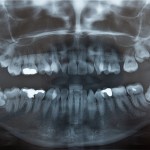
The extraction of lower third molars is a very commonly performed surgical procedure that requires high quality local anaesthesia. While lidocaine has been available since 1948 and is still extensively used in dentistry newer agents such as articaine are increasingly being employed.
The aim of this review was to compare the effectiveness of articaine and lidocaine for lower third molar surgery.
Methods
A protocol was registered with the PROSPERO database. Searches were conducted Cochrane Ventral, Medline/PubMed, Embase, Scopus, Web of Science, Clinical Trials, Open Grey, Biblioteca Digital de Teses e Dissertações (BDTD [Digital Library of Theses and Dissertations]), and Registro Brasileiro de Ensaios Clínicos (ReBEC [Brazilian Clinical Trial Registry]) databases. This was supplemented by hand searches in the journals, International Journal of Oral and Maxillofacial Surgery, Journal of Oral and Maxillofacial Surgery, and Journal of Cranio-Maxillo-Facial Surgery. Randomised controlled trials (RCTs) comparing 4% articaine with lidocaine for the removal of lower third molars were considered. T
he primary outcome was the success rate, defined as the execution of the procedure without the need for reapplication of the anaesthetic after the beginning of surgery. Secondary outcomes included subjective latency time (onset of anaesthesia), objective latency time (prick test), intraoperative patient pain (visual analogue scale), duration of anaesthetic and side effects.Two reviewers independently selected the studies extracted data and assessed risk of bias using the Cochrane (RoB 2) tool. Meta-analysis was undertaken using relative (RR) for dichotomous variables (success and side effects), and mean difference (MD) for continuous variables (latency time, pain, and duration of anaesthetic).
Results
- 14 RCTs (7 split-mouth, 7 parallel) involving the removal of 1114 lower third molars (557 with articaine, 537 with lidocaine) were included.
- Two studies were at overall low risk of bias, 3 at high risk with 9 having some concerns.
- The mean success rate was 89.3% for articaine and 79.68% for lidocaine with meta-analysis (7 studies) showing statistically significant success rate for articaine, RR = 1.09 (95%CI: 1.03 to 1.15).
- 14 RCTs investigated subjective latency of the onset of anaesthesia and 2 objective latency with all 14 reporting a faster onset for articaine than lidocaine. Meta-analysis shows a statistically significant benefit for articaine for subjective latency but not for objective latency (see table below)
| Outcome | No. of studies | MD (95%CI) |
| Latency time (subjective) | 14 | -15.10 (-21.57 to -8.63) |
| Latency time (objective) | 2 | -1.66 (-3.30 to -0.02) |
- 8 RCTs assessed intraoperative pain with articaine showing better outcomes than lidocaine in 7 studies. Four studies assessing postoperative pain all demonstrated better results with articaine. With meta-analyses showing statistically significant benefit for articaine in both intra- and post-operative pain (see table below).
| Outcome | No. of studies | MD (95%CI) |
| Intraoperative pain | 8 | -6.00 (-9.50 to -2.51) |
| Postoperative pain | 4 | -3.05 (-5.69 to -0.42) |
- Duration of anaesthesia was assessed in 13 RCTs with articaine demonstrating better results than lidocaine for all studies with meta-analysis favouring articaine MD = 68.86 (95%CI: 41.27 to 96.45).
- The need for re-application of anaesthetic was assessed in 7 studies with articaine achieving better outcomes than lidocaine in 6 studies.
- Nine studies reported on side effects, 4 cases of temporary paraesthesia were reported with articaine but no cases with lidocaine. One study reported a case of tachycardia followed by syncope with the use of articaine and two studies reported persistent trismus for at least one week – seven cases with the use of articaine and seven with the use of lidocaine. The relative risk for side effects was not statically significant, RR = 1.39 (95%CI: 0.59 to 3.26).
Conclusions
The authors concluded: –
…articaine is superior to lidocaine for use in lower third molar surgeries due to its higher success rate, shorter onset, greater control of intraoperative pain, and longer duration of the anaesthetic effect. Although presenting more side effects than lidocaine, articaine did not cause any permanent or serious complication and the meta-analysis revealed no significant difference in the number of events.
Comments
The authors registered their protocol on the PROSPERO database and searched a wide range of databases supplemented by hand searches in relevant journals. The authors included 14 RCTs which is a lower number than two recent reviews in this area we have looked at previously (Dental Elf – 8th Feb 2021, Dental Elf – 21st Sep 2020), although there were looking at broader questions. Similar to the other reviews in this area the findings demonstrate the effectiveness of articaine for lower third molar removal. Further studies would however benefit from following SPIRIT and CONSORT guidance and involving larger sample sizes and ensuring that adverse effects are reported in all studies.
Links
Primary Paper
Nogueira EC, Almeida RA, de Souza BL, Aguiar PL, Vasconcellos RH. Why choose articaine over lidocaine for the removal of third molars? Systematic review and meta-analysis. J Clin Exp Dent. 2023 Nov 1;15(11):e963-e977. doi: 10.4317/jced.60682. PMID: 38074170; PMCID: PMC10699756.
Other references
Dental Elf – 8th Feb 2021
Third molar extractions: Which anaesthetic solution for the best pain control?
Dental Elf – 21st Sep 2020
Third molars: Which local anaesthetic is most suitable for inferior alveolar nerve blocks?
Dental Elf – 30th Nov 2018
